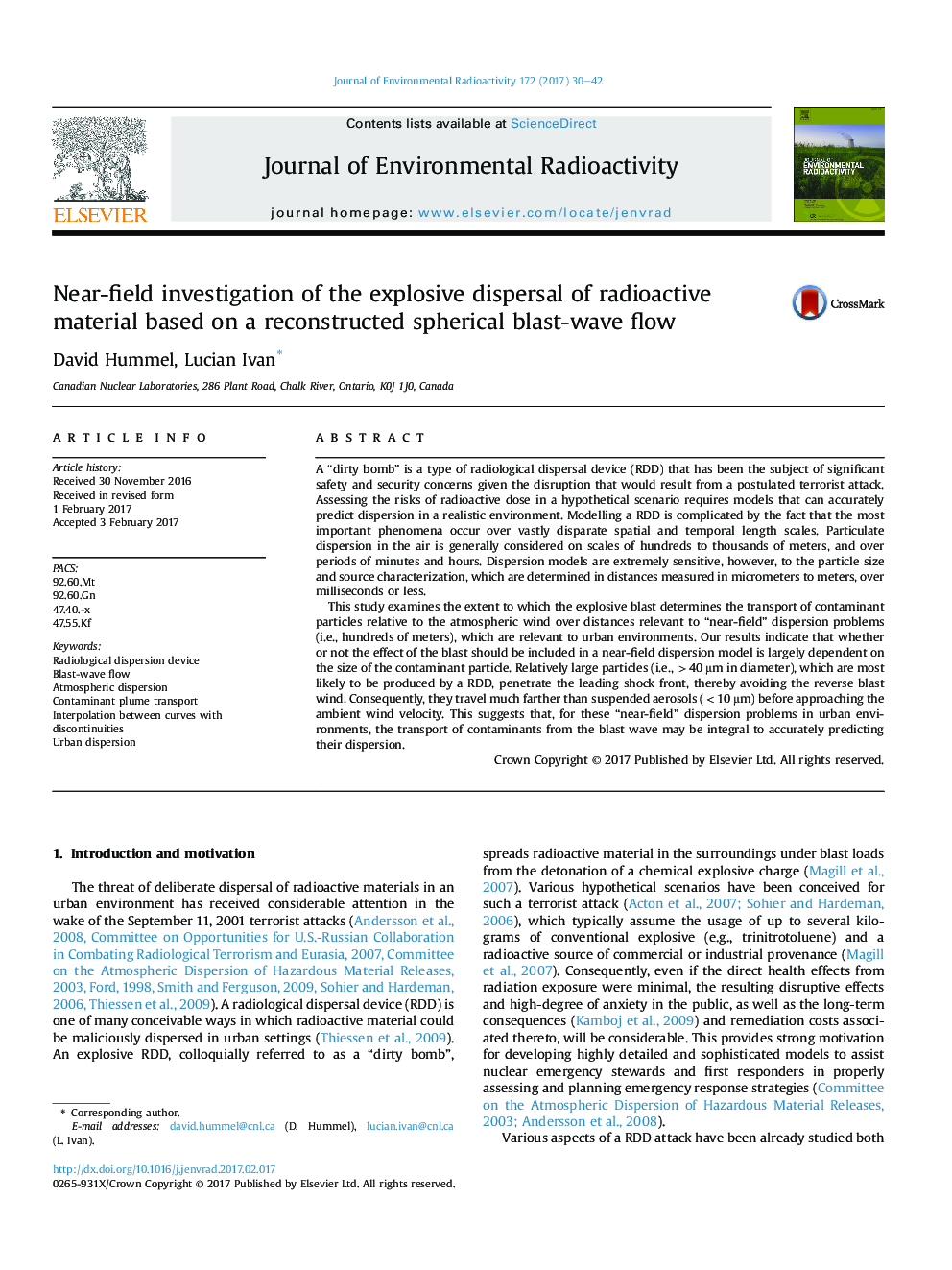| Article ID | Journal | Published Year | Pages | File Type |
|---|---|---|---|---|
| 5477526 | Journal of Environmental Radioactivity | 2017 | 13 Pages |
Abstract
This study examines the extent to which the explosive blast determines the transport of contaminant particles relative to the atmospheric wind over distances relevant to “near-field” dispersion problems (i.e., hundreds of meters), which are relevant to urban environments. Our results indicate that whether or not the effect of the blast should be included in a near-field dispersion model is largely dependent on the size of the contaminant particle. Relatively large particles (i.e., >40 μm in diameter), which are most likely to be produced by a RDD, penetrate the leading shock front, thereby avoiding the reverse blast wind. Consequently, they travel much farther than suspended aerosols (<10 μm) before approaching the ambient wind velocity. This suggests that, for these “near-field” dispersion problems in urban environments, the transport of contaminants from the blast wave may be integral to accurately predicting their dispersion.
Related Topics
Physical Sciences and Engineering
Energy
Nuclear Energy and Engineering
Authors
David Hummel, Lucian Ivan,
